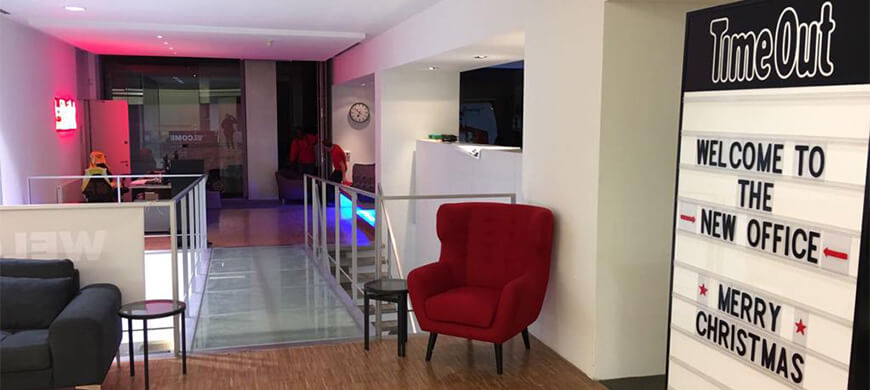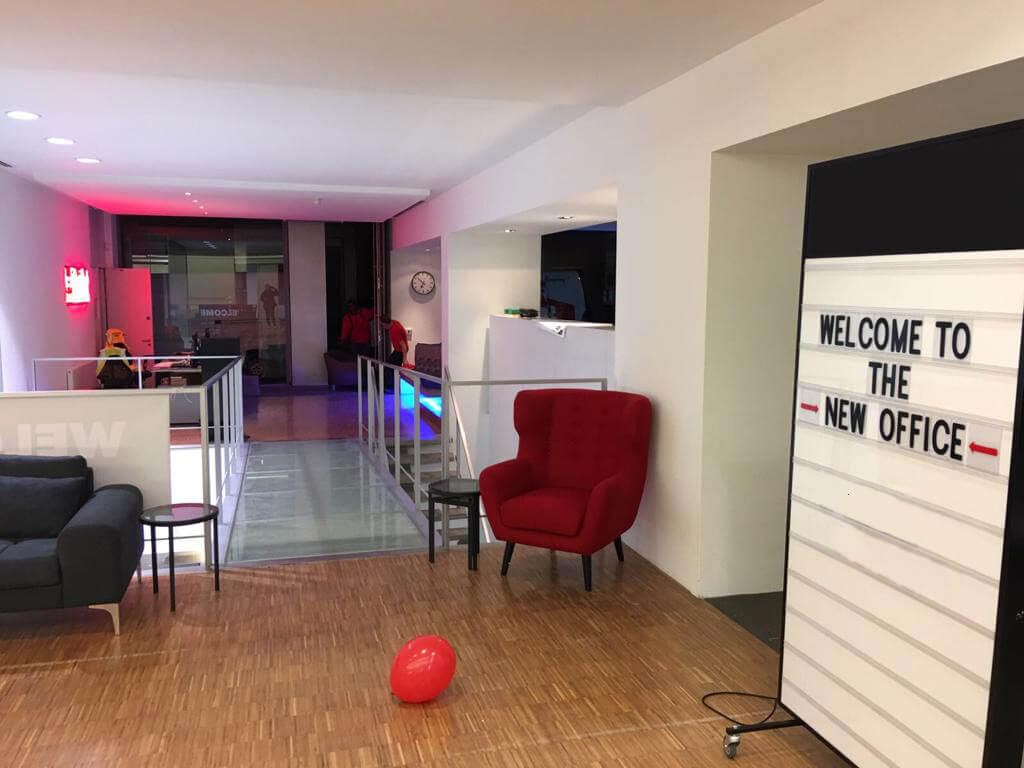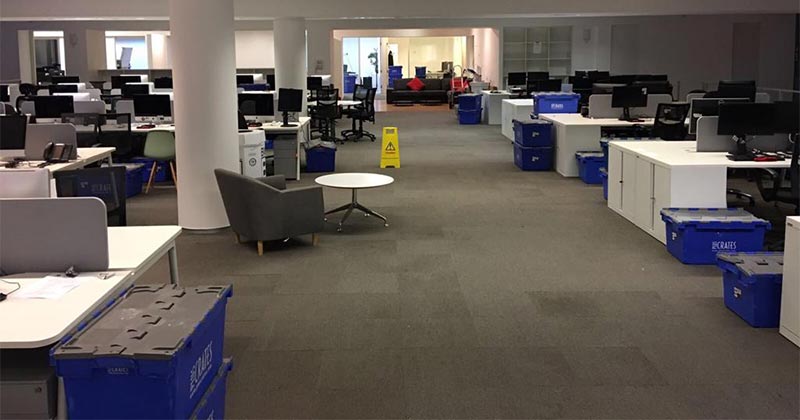-
Whenever you’re planning an office relocation, you should always aim to achieve minimal disruption during the move. Regardless of why you’re moving, you should ensure that you’ve done adequate planning. Even though moving offices is a challenging task, having an office move checklist is one way to ensure that everything flows seamlessly. But what do you need to know about how to come up with a checklist and some of the things to avoid? Here’s a checklist for an office relocation to help you make the move hassle-free and to ensure things run seamlessly. Things can go south if the office relocation is handled badly.

Step 1: Do proper planning at the right time

Once you make up your mind to move to a new office, you should take care of the following within the first 12 to 18 months:
Assess your lease, will the move cost you your deposit? Know behind your mind that you would be responsible for any damages to the old office that may happen during the move.
Ensure that the new offices suit your business growth needs. This will affect how you design your office space and any other technical aspects.
You should have a reliable planning team, to be accountable and delegate responsibilities for the moving process. Start scouting for reliable moving companies, to get the finest offered service and value for your money.
You should establish whether you need moving insurance for any of your office inventory when moving offices. It’s also advisable to establish your moving budget, to avoid overspending. You should also have different types of packaging considering the varying nature of each office equipment.
Communicating with your IT department on the move and deliberating what needs to be done is essential in ensuring your IT infrastructure and data are in safe hands. Technology is one of the most complex aspects of any office relocation checklist.
It is crucial that your management team and your technology side of the company are totally prepared for the relocation. Your team should have a proper understanding of what goes into relocating an office means having a complete assessment of the whole IT set-up at the old office, power sources, equipment Cabling, Servers, Backing up any significant files or data before the relocation, Developing a plan for the new office location, What equipment is needed, Power sources, Cabling, Servers, Etc.
You should also make sure you have a comprehensive plan for your new office space. Measure the new space and propose how you are going to place things out.
Step 2: Inform the concerned parties of the move

Once you’ve established your moving date, you should let your internal and external stakeholders know about your forthcoming relocation. You should also inform them of the motive for the move, the benefits, and the changes it brings about in their everyday routine of the business.
Inform your current landlord and or the property manager, and tender an official notice. This will determine whether your move might have an impact on your rent deposit.
You should also inform your stakeholders of the moving date, contact details and the new office address. It’s advisable to prepare a list of the people you want to send your new address to.
You should also agree on the moving date with your chosen moving company. Other parties you should inform of your move include residents, colleagues, and suppliers.
You should ensure that you send your change of address notice to the following:
- Your partners and customers
- Suppliers and service providers
- Any accounts department
- Statutory bodies you’re registered to
- Internet service providers
- Financial institutions like banks
- Insurance providers
- Any additional services your company makes use of
Step 3: Do proper preparation

The office move involves moving furniture equipment and to do this you will need to make a list of the current office furniture.
If you’re thinking of changing your office furniture to suit your new office theme, you should choose a reliable office furniture supplier.
You should also work with an interior designer on a suitable color scheme. Always bear in mind that the colour scheme in your office space will influence the productivity level of your staff.
Labeling the offices, doors, and employees’ desks will ensure that everything is kept in the right spot in the new office space. You should also have cleaning services at your new premises and make sure the old office is cleaned when you leave. Settle the access codes and security for the new office premises.
To avoid any confusion, you should have a clear schedule for your employees on the moving day.
You should have a team leader for the planning team to supervise each department’s packing tasks. Give instructions to the new location, such as how to park, which equipment to go first, etc. Come up with a homogenized way to tag laptops, screens, hard drives, keyboards etc. and ensure that all staff are aware.
You should assign someone to stay at the current location till the last moving truck has left, and someone to be at the new location for administration. Ensure that each department empties and packs or seals its filing cabinets.
Most important, you should confirm that keys, access codes or tags, and security information are all accessible.
Step 4: Embark on your move

Once the actual day arrives, it should be easy if you’ve done adequate planning. And to make sure the day runs smoothly consider doing the following:
Apart from installing new IT systems, you should also ensure there’s fast internet/Wi-Fi access. You should also ensure the telephone lines and systems are operational to avoid any hiccups running the business’s daily operations. The team leader appointed should ensure all the labeled boxes are placed in the right locations, and all desks and office equipment are kept in the right places.
Considering how hectic a move can be, you should avail finances for refreshments for the internal team and the moving crew.
Step 5: Settle into your new space

Here you get to do the final setup to resume business as usual. You should confirm that all areas are visibly labeled for staff members to see.
You should also make sure that the tech equipment, computers, telephone lines, and systems are up and running. Don’t forget to update the organisation’s new location and contact information on the website.
Ensure that everything has been moved to where it should be and if there’s anything missing, you should be able to clear it up with your moving company. Do a detailed check of the premises, and report any damage to the moving company.
Make sure that you’ve dealt with any old leases and that any deposits have been received from the old premises. Return all passes, keys, and keycards for the old premises and distribute the new keys and passes to the new voice.

Things not to do during an office move
When planning to move to a new office location, you need to be thoroughly careful and diligent. Some of the things you should avoid during an office move include the following:
Trying to do the move yourself
You shouldn’t underestimate how extensive an office move project can be in the name of trying to save costs. Solely trying to execute the office removals alone can be quite risky or costly for the business. It’s advisable to engage other people and hire a reliable moving company to help out with the office relocation project.
Setting a budget that’s too low
Taking shortcuts when planning the move to a new office can be quite risky. The planning process should be done carefully to avoid additional costs while the project is underway.
Doing things the last minute,
Moving office at the last minute is a bad idea. You need to plan in advance to ensure that you have adequate time and resources to conduct the office move seamlessly. Although moving office can be a hectic and stressful life event, taking your time to plan things beforehand and following your office moving checklist is one way to ease the process.
Don’t overlook the finer details
Brainstorming with your planning team can be the key to making sure nothing is left out. For instance, making a list of the general supplies you may need to procure such as the following:
- Getting different sized storage containers
- Bubble wrap & packaging papers
- A dedicated packing desk
- Labels and permanent markers
- Air-filled padding, e.t.c
Irrespective of your organizational settings, as your business grows, your needs will change and there will come a time where change will be inevitable. When that happens, you’ll need to improve the office environment so that you can achieve your desired results. While change can be good for business, you should ensure that your team and stakeholders are prepared and ready to embrace it. Regardless of the type of relocation, you’re having, whether office or domestic, having a moving checklist will help reduce frustrations and help staff change to a new location. This ultimate office move checklist will help you to run your office move effortlessly, lessen the effects of change and position your move as a helpful, exciting development for your business and your staff.
Optimal Office move checklist
The Quality Shows in Every Move We Make
Working Hours
Monday 8:00am - 6:00pm
Tuesday 8:00am - 6:00pm
Wednesday 8:00am - 6:00pm
Thursday 8:00am - 6:00pm
Friday 8:00am - 6:00pm
Saturday 8:00am - 6:00pm
Sunday CLOSEDOffice Removals London
33 Lurline Gardens
Battersea
London
SW11 4DD
United Kingdom
020 3322 6056
[email protected]


